Educating Steem: What We Can Learn From The Flu Pandemic of 1918
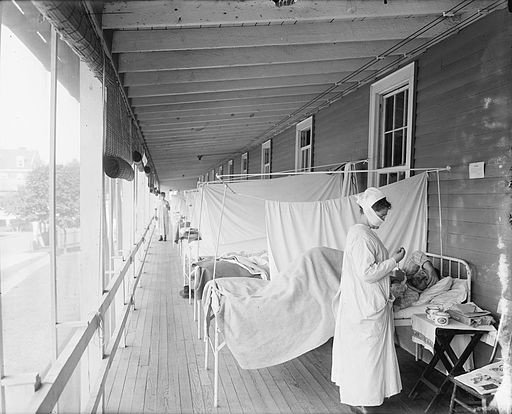
See Image Here
To start things off, let’s put the Flu Pandemic of 1918 into perspective. More than 40-million people died from it. It killed more people than the “Black Plague” and World War I; the death rate was 10-fold that of the Great War. In fact, It killed so many people from 1918-1919 that the average life expectancy in America went down by over 10% (6).
To put it plainly, this was the worst epidemic of all time. It killed my great-grandmother and my mom’s great-aunt. The word disaster doesn’t touch the severity of what happened, and it is a time in history that many now rarely think about. Hopefully through this article, that ends today.
In this post, I will briefly cover the historical highlights, give some perspective into the science and medicine of influenza/the particular flu in 1918, and the importance of influenza vaccines today.
Brief Summary of the Flu Pandemic of 1918
In late 1918, many things were occurring, including the end of the Great War (World War 1). However, around the world a bigger beast was arising. Influenza, which many now think of as a terrible “common cold” became a disaster of unimaginable proportions in the beginning of the 20th Century. In America, 28% of the population was infected by it, killing 2.5% of those individuals (6). While a typical influenza strain kills about 0.2%, and of those it is usually the very young and old, this virulent strain killed the majority in the range of 20-40 years of age. In other words, if one was infected with this strain today and was in the age range of 20-40, the chance of dying was far greater than 2.5%. I will discuss the reasons for this later in the post.
The exact origin of this strain is unknown, but is believed to have started in Asia. It hit the US twice. The first outbreak was in the spring of 1918, and the second hit in the fall. The epidemic could not be ignored by the winter of 1918. It was highly contagious. The entire globe was infected. People wore masks in the street and stores could not even hold sales (6). It happened quickly, and by spring of 1919, the influenza had mutated again, fortunately to a less virulent strain (1).
What was the infection course like?

See Image Link Here
In three words: Quick and Deadly. While the first global spread in the spring killed far less and many escaped with just the common flu symptoms. The second wave in fall/winter of 1918 killed people often in a matter of a few hours (2). They would get a cough and fever and then would be coughing up blood and suffocating on their own fluid/blood filling their lungs. They were essentially downing in their own blood/mucus from secondary pneumonia. Again, this could all occur in a matter of hours!
One account from 1918 described a scenario about four women happily playing bridge together, but overnight three of these ladies died.
John Barry, historian and author of the “The Great Influenza” said,
"People could see while they were being told on the one hand that it's ordinary influenza, on the other hand they are seeing their spouse die in 24 hours or less, bleeding from their eyes, ears, nose and mouth, turning so dark that people thought it was the black death…people knew that they were being lied to; they knew that this was not ordinary influenza…(it) killed more people in 24 weeks than AIDS has killed in 24 years (3). "
The Virology of Influenza:
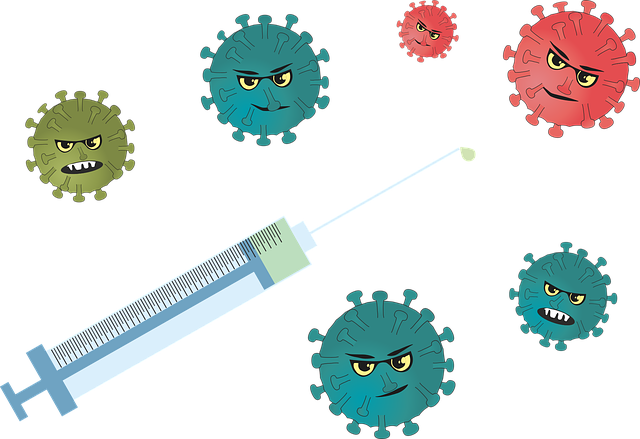
See Image Link Here
Influenza is a single stranded RNA virus that affects the upper a lower respiratory tracts. It is highly contagious and is spread via respiratory droplets. There are three subclasses-- A, B, and C, but for simplicity we will just discuss the A subtype, as it is the most virulent. Influenza A is further subcategorized into H and N, one common one today being H1N1. The influenza outbreak in 1918 was a specific, virulent H1N1 strain. “H" stands for hemagglutinin, the protein antigen that allows the virus to attach to cells. “N” stands for neuraminidase antigen that allows the virion to release and spread (4).
While this information above may seem like a lot scientific jargon, the H and N are important to mention for multiple reasons. Influenza carries its very own RNA polymerase, which helps it replicate very quickly. However, this particular polymerase is not a “perfectionist" and creates many mistakes that lead to single point mutations in the RNA. This is why people have to get influenza vaccines every year because we have to prepare for slight changes in the different strains. This is called antigenic drift.
Antigenic Drift?
Yes, antigenic drift is when the polymerase makes enough small point mutations within the H and N proteins to create a new profile for that influenza strain. It is not evolutionary; it is not like antibiotic resistance which develops due to the “strongest” surviving. It is all happenstance from the mistakes of the RNA polymerase. However, within a span of 2-3 years, these changes are enough to have to be vaccinated again for protection (4). Vaccinations are given yearly to account for these mutations.
What kind of change leads to a pandemic?: Antigenic Shift
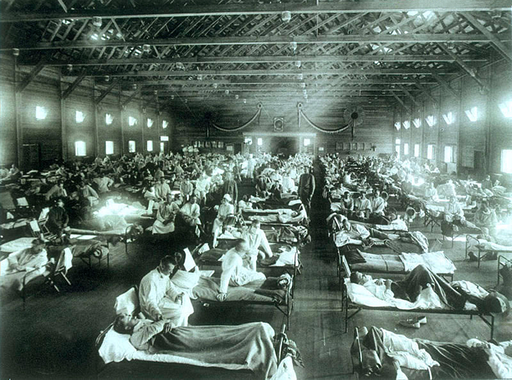
See Image Link Here (CC): Attribution- Pandemic Influenza: The Inside Story. Nicholls H, PLoS Biology Vol. 4/2/2006, e50 http://dx.doi.org/10.1371/journal.pbio.0040050.
Antigenic drift is enough to lose full immune protection, but it is generally not enough to change the virulence factor significantly. Antigenic shift is when there are major changes in the H and N portions of Influenza A due to a reassortment of genomes between different strains of influenza. It is a co-infection of different influenza strains within a cell of the host, and through recombination, makes a new strain. These tend to occur about every 20 years. For simplicity, one does not need to go further into the microbiology. For example, the influenza virus in 2009 was a classic model of an antigenic shift. The host was a pig that was co-infected with avian, human, and swine flu which re-assembled to create a new H1N1 strain (4). Fortunately, for humanity, it was much less virulent than the one that occurred in 1918. It still killed nearly 300,000 people.
What does it do once it infects the human?
It infects the epithelial columnar cells of the respiratory tract. These cells eventually become necrotic and die. The virus keeps replicating and moving to adjacent cells. It can replicate very rapidly and move to adjacent cells within 4-6 hours (4). By a few hours, a significant number of respiratory cells can be infected. On top of this, the host immune response kicks in and can cause a robust response, creating even more trauma to the respiratory tract. With this information, it is much easier to understand why people could actually feel fine and then die in a few hours as described from accounts in 1918.
When people die from this, what is the cause?
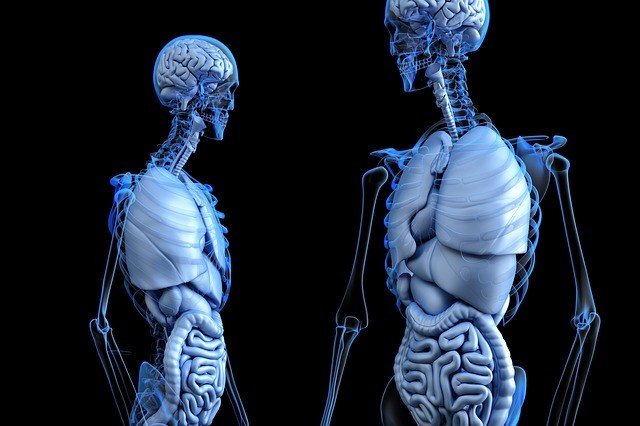
See Image Link Here
Pneumonia is the major cause of death. Influenza itself can cause pneumonia as it infects the lower airways as well. If pneumonia develops due to influenza itself, the death rate is very high (4). Secondary bacterial pneumonia can also occur and can be fatal, but this is typically present about a week after symptoms begin (4). Mortality typically occurs in the very young and old.
So the very young and old usually die, why was it different in 1918?
Great question! There are a couple theories, and I will present both briefly.
- Prior Immunity: There have been multiple flu pandemics in history. Prior to 1889, the predominant Influenza A was a H1N1 subtype. However, after 1889, the predominant prior infections were H3N8. Simple put, middle aged people and older had partial immunity to the H1N1 subtype because many had been infected with a similar, less virulent virus prior to 1889. Those born after this were completely unprotected (5).
- Another theory is that of immune response. The very young and old have weaker immune systems, while younger adults have a more robust immune response. When there is a very virulent infection, the immune system may go into overdrive trying to fight off the virus. This response causes damage just like the virus and leads to more virulence in the process of trying to kill it. The very young and old may die with less virulent strains, but if it is virulent enough, the immune system may be a detriment to survival.
Learning from History and Science: What should one take from this knowledge?
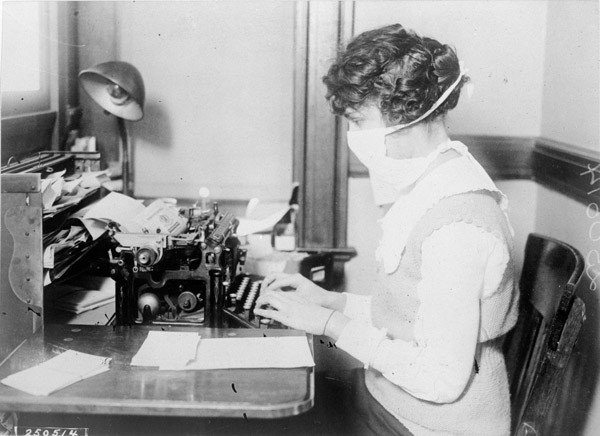
See Image Link Here
Today, our society is filled with doubt and mistrust. Frankly, often for good reasons. But in my opinion, vaccines are not one of those. As a physician, I know that there are for sure true side effects to vaccines. You can develop a fever. There are even certain people who develop Guillain-Barre, while very rare (I have never seen that from a vaccine). However, countless studies have proven the benefit on a world-wide basis.
As a family doctor, I receive all my vaccines and give many different vaccines to my pediatric/adult patients. The one that I give the most is the influenza vaccine, as it is a yearly one. This one is recommended for anyone over the age of 6 months. Unfortunately, it is the one that most people do not get. I strongly recommend that everyone get a flu vaccine every year. A common complaint I hear a lot is that “I always get the flu when I get this vaccine.” It is true that you can get a fever from the vaccine, but you certainly do not get the flu. I have seen people on their death beds due to the “flu.” It is one nasty virus.
We need to look at science and history for support for why one should get vaccines. The science is there but the history is equally as important. Partial immunity from prior H1N1 strains likely saved the older population during the Flu Pandemic of 1918, while the unprotected were literally pouring out blood and dying by the millions! A common defense might be that many died of pneumonia so antibiotics would help now. Antibiotics may have saved some lives, but a far greater amount likely died of viral pneumonia. Some sources differ on this point, but the science would make one conclude that the pneumonia was predominately viral if it killed them so fast. A secondary bacterial pneumonia usually takes a week to develop, not hours.
This is a frightening thought because it means we would have very little defense if a virulent antigenic shift occurs again in an age where less and less people are getting vaccinated. Vaccines may be our only hope if another shift causes devastation like this.
One critique to the current vaccinations is that we are designing them for antigenic drift not shift. It may be wiser to target vaccines for certain age groups depending on what they have not been exposed to prior. However, the vaccinations today are still extremely important because it gives us more immunity to potential strains, and it significantly reduces ones risk of getting the seasonal flu which kills many people each year.
The Flu Epidemic of 1918 was the greatest medical epidemic of all time, and I hope everyone learned something from it.
On a Lighter Note, Have a Great Thanksgiving Weekend!
I am a current family medicine physician in the great state of Indiana.
Feel free to follow for more posts on health/science/music/travel/and more
Sources:
1) https://www.historyofvaccines.org/content/articles/influenza-pandemics
2) http://www.history.com/topics/1918-flu-pandemic
3) http://www.cnn.com/2005/HEALTH/conditions/10/07/1918.flu.witness/index.html
4) Powerpoint Medical School Lecture Presented By Dr. Samina Akbar, PhD in 2014.
5) https://news.nationalgeographic.com/news/2014/04/140428-1918-flu-avian-swine-science-health-science/
6) https://virus.stanford.edu/uda/
Images:
All images are public domain, except one above, which is creative commons and attribution was given to the author above. All links provided above.
There is some great information here. I still need to get my flu shot this year. Thanks for the reminder!
Thanks man! I worked hard on this one. I was excited to actually have the time for a medical/science/history post. This pandemic is fascinating to read about. Appreciate the support as always. It is annoying that the flu shot is yearly, but it is indeed an important one!
Great. Thank you. It is very informative post. I have read it. upvoted
Thanks for reading!
Congratulations @tfeldman! You have completed some achievement on Steemit and have been rewarded with new badge(s) :
Click on any badge to view your own Board of Honor on SteemitBoard.
For more information about SteemitBoard, click here
If you no longer want to receive notifications, reply to this comment with the word
STOP